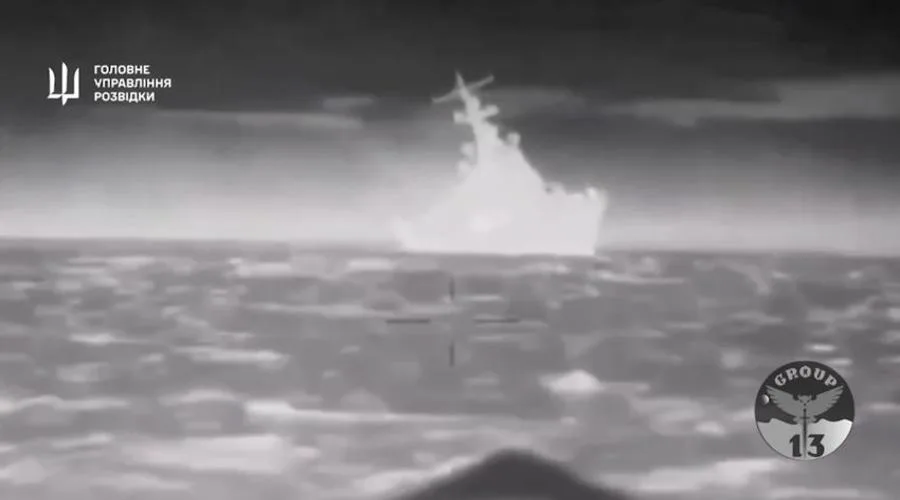In a rare interview, a member of a secretive Ukrainian unit revealed that six sea drones, powered by jet skis, successfully sank a Russian-guided missile ship last week. The small Russian warship, known as the Ivanovets, was targeted by ten “MAGURA” drones, six of which hit and ultimately disabled the vessel. The drones, which are only a few meters long, have an impressive range of nearly 500 miles, allowing the Ukrainian unit to launch attacks from various locations along Ukraine’s coastline.
The pilot, identified as call sign “13,” is part of Ukraine’s defense intelligence agency (GUR), which has been linked to several attacks on Crimea and Russia itself. These attacks often involve the use of drones, which provide Ukraine with an advantage beyond the range of conventional weapons. Night-time footage released by Ukraine showed the drones being fired upon by Russian forces as they approached the Ivanovets. At least two drones struck the ship, causing significant damage and explosions.
While CNN could not independently verify Ukraine’s claims, the sinking of the Ivanovets marks another victory for Ukraine’s campaign against Russia’s Black Sea Fleet. Since Russia’s takeover of Crimea in 2014 and the subsequent losses during the 2022 invasion, Ukraine no longer has a functioning navy in the Black Sea. However, the use of drones has allowed Ukraine to level the playing field and target strategic locations in Russia.
Ukraine’s top general has called for the widespread use of drones on the battlefield to save Ukrainian troops’ lives and counter Russia’s material advantage. Drones and other advanced weapons provide Ukraine with the best means to avoid being drawn into a positional war where they lack the advantage. This shift in battlefield operations requires a wholesale redesign and abandoning of outdated thinking.
The pilot emphasized the delicate nature of operating the drones, comparing it to a jeweler’s work. Controlled remotely through a Starlink connection, the drones can be pre-programmed for long journeys across the Black Sea. A pilot constantly monitors the drone’s progress, with the final approach to the target often controlled manually. The drone’s payload of 250kg can be increased to 300kg, but the pilot stated there is no need. The drones have proven their effectiveness against even the toughest ships in Russia’s Black Sea fleet.
The drones’ size, nearly six meters long, makes them difficult to spot in the open sea, providing an advantage for the Ukrainian unit. The weaponry aboard Russia’s warships was not designed to counter drones, forcing them to rely on cannons more suited for ship-to-ship combat. Video footage of the attack on the Ivanovets showed the ship’s ammunition being unable to stop the incoming bombs from the drones.
During a demonstration on the Black Sea, CNN witnessed the agility of the drones as they executed tight turns at high speeds on autopilot. The pilot highlighted that no warship can match the maneuverability of these drones.
In conclusion, Ukraine’s use of sea drones powered by jet skis has proven to be a formidable weapon against Russia’s Black Sea Fleet. The successful sinking of the Ivanovets showcases Ukraine’s ability to target strategic locations and level the playing field. As Ukraine continues to rely on drones and other advanced weapons, it is reshaping battlefield operations and challenging Russia’s dominance in the region.

